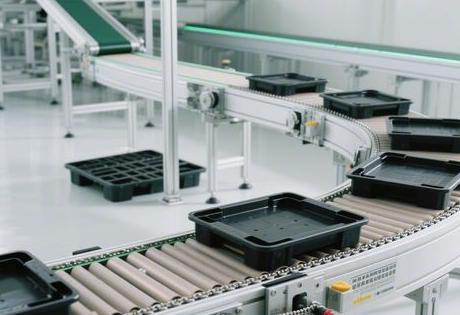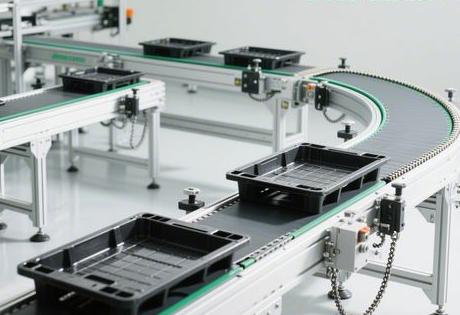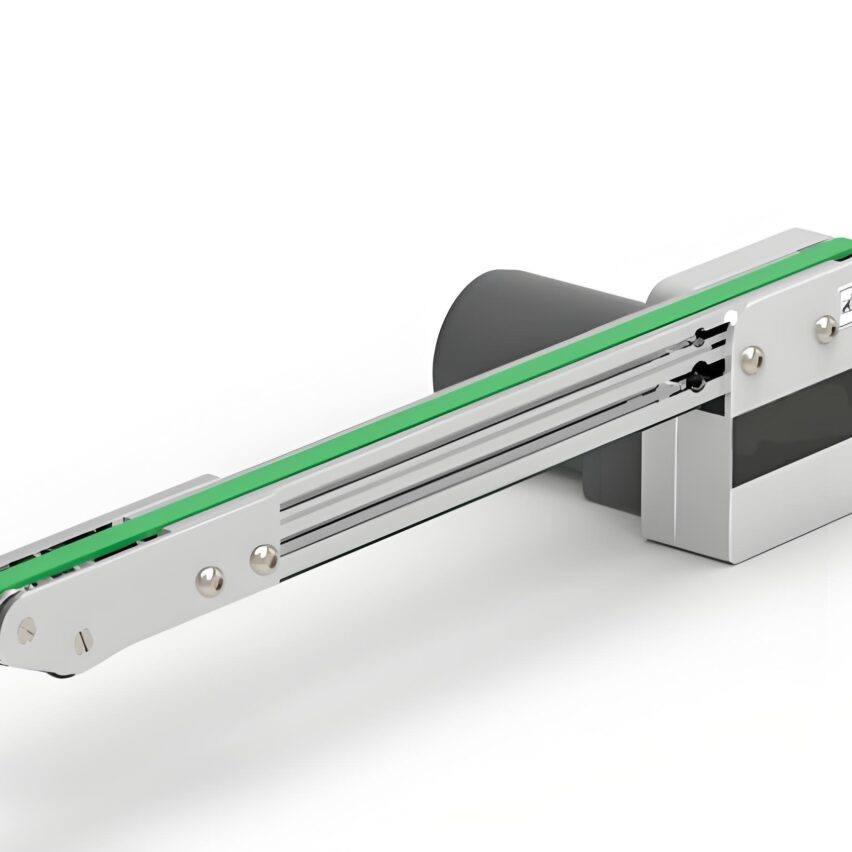I. Topological innovation and mechanical reconstruction of disc structures
Conventional linear multiplier chains have natural limitations in terms of space utilisation and process convergence.Disc Topology LayoutThree major breakthroughs through loop closure design:

- space compression: 8m diameter disc line can accommodate 20 stations, saving more than 60% of floor space compared to linear layout.
- dynamic equilibrium: Centrifugal force compensation design (Eq.F_c = mω²r(10kg workpiece radial offset ≤ 0.1mm at angular velocity ω = 0.5rad/s)
- synchronised controlMaster-slave servo motor drive, eliminating the cumulative error of traditional chain drive, with positioning accuracy of ±0.05mm.
personal viewpoint: The nature of the disc structure isMapping of functions of space and time-Converts the length of the production line into a rotation angle, so that the process switching from linear displacement to angular transformation, which is precisely the underlying logic for solving the pain point of frequent changeover in electronic assembly lines.
II. High-load adaptability design of core components
(i) Enhanced Speed Chain System
- Chain for discs
- Material: 42CrMo alloy steel chain plate + GCr15 bearing steel roller, surface nitriding treatment (hardness HV900)
- Structure.Double-row staggered tooth layoutThe flexural rigidity is 300% higher than that of single row, and the load capacity is up to 800kg/station.
- Curved guideway technology
- Adopt variable curvature guideway (minimum curvature radius R=1.5m), track flatness ≤0.2mm/m
- Hardened steel guide rail surface laser fused tungsten carbide layer (0.8mm thick), wear-resistant life of more than 50,000 hours
(ii) Disc drive system innovations
| Traditional Pain Points | Disc programme | real effect |
|---|---|---|
| start-stop shock | Magnetorheological fluid buffer | Vibration Reduction 72% |
| Multi-motor desynchronisation | CANopen bus synchronisation control | Phase difference <0.1° |
| Thermal deformation hysteresis | Expansion compensation tank (clearance δ = αLΔT) | No deformation and jamming at 80°C |
case (law): After adopting this design for a UAV motor assembly line, the 16-process changeover time was reduced from 35 minutes to 90 seconds, and production capacity was increased by 40%.
III. Synergistic paradigm for intelligent control systems
(i) Dynamic beat control
- Visual guide positioning: Industrial camera identifies the QR code of the tooling board and feeds back to PLC for real-time speed adjustment.
- Load Adaptive Speed Control: Current sensor monitors motor torque and automatically reduces speed 15% when load > 70% rating.
- digital twin preview: Resonance points of discs of different diameters simulated by TwinCAT platform to avoid critical speed risk
(ii) The safety and security revolution
- Area-wide emergency stop mechanism
- Ring distributed emergency stop pushbuttons (spaced π/6 radians)
- Response time ≤80ms, better than ISO 13850 standard 40%
- Energy locking device
- Magnetic brake locks the turntable within 0.2 seconds after power failure to prevent inertial slippage
IV. Engineering breakthroughs under extreme working conditions
(i) Clean environment adaptation
- Dust-free lubrication system: Sealed self-lubricating bearing chamber with polyperfluoroethylene ether grease (evaporation rate <0.01%)
- Static dissipative design: Carbon fibre brush wire contacting the chain plate, static voltage reduced from 15kV to less than 50V
(ii) Long-lasting operation in high-temperature environments
- Material modification programme
- Aluminium diffusion treatment of chain plates (temperature resistance 650°C)
- Ceramic coated rollers (upper operating temperature 1100°C)
- Active Cooling Technology
- Copper water-cooling channels buried inside the guideway (flow rate 2L/min)
- Infrared temperature measurement + PID regulation, maintaining the working temperature <80°C
V. Optimisation of whole life cycle performance
Third-order maintenance model::
- Predictive maintenance
- Acoustic emission sensors capture chain crack signals (sensitivity 0.1mm)
- Prediction of failure probability based on Markov chain models
- Modular replacement
- Sector guide quick release module (replacement takes <30 minutes)
- Chain extraction and replacement technology in segments (no need for full line shutdown)
- Recycling system
- Scrap chain plate remelting and forging new links
- Bearings refurbished and downgraded for light duty lines
Economic validation: After implementing the model in an automotive parts plant, the overall equipment efficiency (OEE) rose from 761 TP3T to 921 TP3T, and maintenance costs dropped by 501 TP3T.
Technology foresight: cross-border integration of disc doubling chains
- Superconducting magnetic levitation alternative
- YBCO superconducting block combined with permanent magnet track reduces frictional resistance to conventional 3%
- Laboratory environment speed has reached 120rpm (500% upgrade over conventional)
- quantum positioning system (physics)
- Angle measurement of tooling boards based on atomic gyroscopes (accuracy 0.001°)
- Elimination of mechanical transmission errors
- Self-supply technology
- Piezoelectric ceramics collect vibrational energy (conversion efficiency 12%) to power the sensors
Exclusive data: Global Disc Production Line Market Size to Surpass $9.8 Billion by 2026, with Penetration in Semiconductor Packaging Expected to Reach 35% -Topological innovations are redefining the boundaries of flexible manufacturing.
Self-questioning: the four core issues of the disc multiplier chain
Q1: How is the minimum disc diameter determined?
D_min ≥ 2R + W-N/π(R: safety radius; W: work plate width; N: number of stations), 8-station line body D_min=4.2m.
Q2: Why do you recommend Silicon Carbide coated rails?
Its coefficient of friction (0.02) is only 1/3 of that of chrome-plated guides, and its resistance to particulate wear is 8 times higher, making it particularly suitable for lithium-ion material transport.
Q3: How to prevent errors in multi-species mixed lines?
RFID+Machine Vision Dual Verification: Automatic comparison of 3D models when labels are missing, with a false positive rate of <10-⁶.
Q4: Is it compatible with AGV connection?
configuration requiredRadial telescopic docking station(Stroke ±300mm), positioning accuracy up to ±1mm, supports fully automatic loading and unloading.














